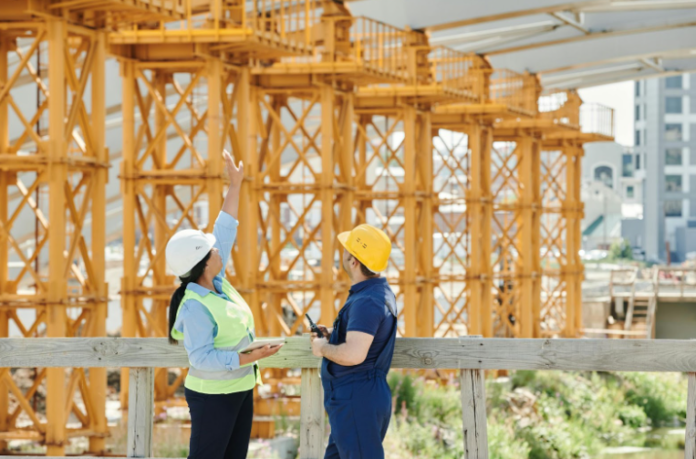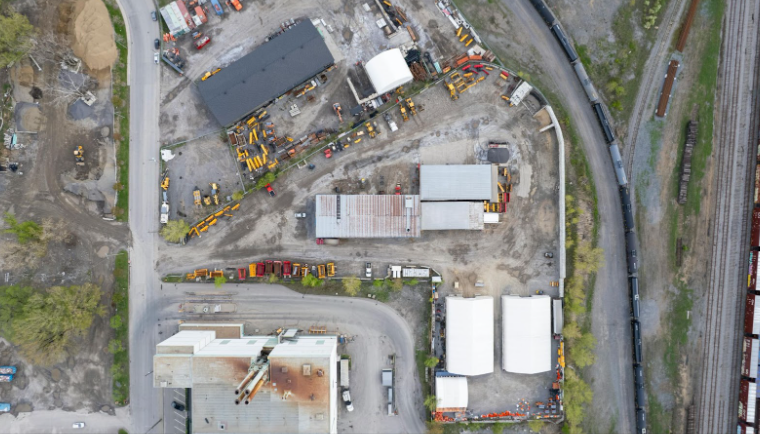
The most important work is usually conducted behind the scenes, prior to any construction beginning. Risk does not stem from poor design or material delays—it starts much sooner than that, in overlooked permits, buried underground lines, or rushed assessments. Infrastructure projects in today’s world demand careful preparation. The planning teams must understand what could go wrong from the beginning and take measured action to prevent costly mistakes. This fledgling discipline is what holds schedules together and crews safe once the earth begins to shake.
Pre-Construction Planning and Equipment Coordination
Before breaking ground or digging a foundation, project managers must bring clarity to timelines, resources, and responsibilities. Poor planning at this stage can derail the entire construction, jeopardize safety, and lead to unexpected costs. Construction sites are complex, and without exact coordination, even minor oversights—a delayed equipment delivery or a lack of staging space, for instance—can create unnecessary delays. The goal is not simply to have a plan, but to have a plan that will withstand the pressure test and meet the real conditions in the field.
It is just as important to carefully coordinate equipment availability, delivery schedules, and planning for use as it is the building plans. When planning and logistics are efficiently handled in the pre-construction phase, the crews are able to stay focused, safe, and productive during the project.
What to prioritize and how to tackle it:
- Staging areas: Determine and layout specific zones for material delivery, equipment parking, and waste storage to prevent on-site congestion.
- Equipment planning schedule: Create a realistic project schedule of when each machine is required and pre-arrange availability with suppliers.
- Access and movement planning: Plan for vehicles and equipment to enter, exit, and travel around the site safely without blocking active work areas.
- Backup plans: Prepare alternatives for critical equipment or late deliveries so that work will not stop if a machine breaks down or is unavailable.
- Crew coordination: Schedule crews together with equipment needs so that labor and tools are on-site at the same time, preventing downtime or duplicate efforts.
Identifying and Mapping Underground Utilities
Perhaps the most underappreciated risk in the early phases of a project is underground. Striking an unexcavated gas pipeline or severing a fiber-optic cable not only slows down construction—it can be lethal and lead to severe legal and financial consequences. Older buildings are not likely to have up-to-date utility records, and publicly available information doesn’t usually cover private installations like irrigation systems, power lines, or septic tanks. That is why a complete image of what lies beneath must be obtained before any digging can begin.
This isn’t about check-marking a box—it’s about creating genuine situational awareness. Construction workers need good information regarding where they are excavating, where they’re not allowed to excavate, and what kind of infrastructure they are excavating around. Skipping this step, or using a stale map, creates project delays, insurance claims, and destruction that didn’t have to occur had they planned better.
Key steps to take:
- Public utility locates: Begin with licensed services flagging public lines such as water, sewer, and electrical.
- Hire utility locating experts: Employ professionals who specialize in private utility locating to find and record systems not covered by public records, particularly on commercial sites or older properties.
- Implement ground-penetrating radar or electromagnetic tools: Utilize advanced equipment where working in high-complexity or high-risk zones where line depth and/or type are unknown.
- Document everything: Note the locations and depths of all utilities found and make this information available to all members of the team.
- Reconfirm prior to excavation: Don’t trust markings made weeks ago—check utility data just prior to digging to account for changes or mistakes.
Site Assessment and Environmental Considerations

Every location comes with its risk variables. There is the risk of steep land, poor drainage, collapsing ground, or sitting close to fragile ecosystems that can provide unexpected challenges unless identified early. A site analysis properly defines whether the ground can hold up the slated building safely and whether environmental conditions will resist timing and making the construction complicated. Skipping this first step will provide more cases of structural issues, regulatory pushback, or loss of nearby land and aquatic ecosystems.
A strong assessment also allows teams to make design adjustments before making costly mistakes. When done properly, this task isn’t simply about compliance—it’s about long-term safety and stability.
The following areas should be inspected for a site assessment:
- Soil composition: Test for bearing capacity, contamination, or moisture retention that could affect foundations.
- Topography and grading: Check slopes, grade breaks, and whether leveling is necessary to prevent water pooling or erosion.
- Vegetation and root systems: Check for trees or deep roots that will get in the way of excavation or must be preserved.
- Proximity to flood zones: Cross-reference floodplain data to determine whether extra drainage or raise is needed.
Below are common environmental problems to solve before approval:
- Wetland or protected area boundaries: Check if the land is situated in areas with environmental limitations.
- Stormwater effect: Look at how the development will affect the drainage in the neighborhood and whether retention structures are needed.
- Noise and dust limitations: Create strategies to minimize intrusion on surrounding homes or wildlife.
- Wildlife activity: Check if regional animals or ecosystems require conservation or relocation.
Regulatory and Legal Compliance Checks
Every project will have to navigate a chain of legal obstacles before construction is initiated. Omission of a single condition can lead to critical delays, fines, or mandatory redesigns. Different regions and types of projects have varying regulations, so assumptions can prove perilous. Coordination between legal bodies and authorities in preparation ensures compatibility with all applicable rules when building starts, reducing the risk of discord once construction has begun.
These are significant compliance areas that would have to be audited and documented:
- Zoning and land-use permits – Make sure the proposed activity is in line with prevailing zoning rules and development plans.
- Building permits and inspection schedules – Obtain required permits before starting construction and get acquainted with the schedule of mandatory inspections.
- Environmental codes – Treat standards for air, water, and soil, especially when working near conserved environments or dealing with hazardous materials.
- Historic site and landmark ordinances – Verify if the site or surrounding properties have heritage restrictions that affect design or excavation.
- Utility coordination requirements – Verify that notice has been given to relevant public and private utility organizations before excavation.
- Workplace safety requirements – Verify occupational safety laws in place locally and confirm that jobsite conditions align with required procedures.
- Insurance and liability cover – Check policies are active and adequate to cover property, employees, and third-party risk.
Conclusion
A successful project starts with the unseen efforts—planning, checking, and preparing every detail before the first machine ever sets a foundation to the ground. Skipping initial steps results in delays, added costs, and issues that are difficult to fix once the process of construction is initiated. When crews have time to inspect the site, understand what’s down there, and meet all codes, they’re building on solid ground—literally and operationally.





